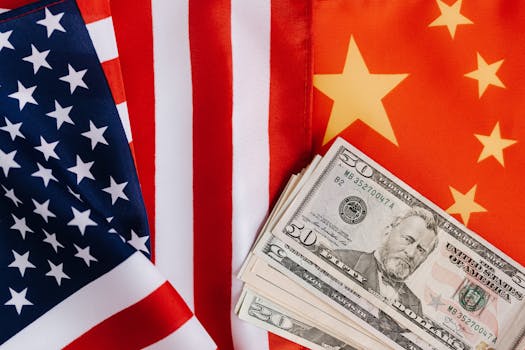
**
US Outmaneuvers China's Rare Earth Export Ban: Diversification Strategies and Supply Chain Resilience
The escalating US-China tech rivalry has brought the critical minerals supply chain into sharp focus. China's dominance in the processing and export of rare earth elements (REEs) – vital components in everything from electric vehicles (EVs) to smartphones and military hardware – has long been a source of concern for US national security. Recent export restrictions imposed by Beijing have further intensified this concern, prompting the US to aggressively pursue strategies to bypass China's stranglehold on these essential materials. This article explores the multifaceted approaches the US is employing to secure a reliable and independent supply of critical minerals, including rare earth magnets, lithium, cobalt, and nickel.
The Stakes are High: Understanding the Critical Minerals Crisis
The global demand for critical minerals is skyrocketing, fueled by the burgeoning renewable energy sector, the proliferation of advanced technologies, and the continuing growth of the EV market. China's control over the processing and refining of many of these minerals has created a significant vulnerability for the US and its allies. This dependence raises concerns about:
- Supply Chain Disruptions: Geopolitical instability or unexpected export restrictions could cripple industries reliant on these materials.
- National Security Risks: China's dominance provides leverage in geopolitical negotiations, potentially compromising US strategic interests.
- Economic Vulnerability: Reliance on a single source creates price volatility and exposes businesses to significant financial risks.
Diversification: The Cornerstone of US Strategy
Facing these challenges, the US is pursuing a multi-pronged approach centered around diversification of its critical mineral supply chain. This involves:
Domestic Production Boost: Significant investments are being channeled into domestic mining and processing projects. The Inflation Reduction Act, for instance, provides substantial tax credits and incentives to stimulate domestic production of critical minerals, including lithium, cobalt, and nickel. This includes funding for exploration, mine development, and processing facilities.
Strategic Partnerships with Allies: The US is forging closer ties with reliable allies like Australia, Canada, and other countries rich in critical mineral resources. These partnerships involve collaborative mining projects, joint processing facilities, and agreements to secure supply chains. The goal is to create a robust, diversified network outside of China's influence. This includes secure supply agreements and the development of shared processing facilities.
Recycling and Urban Mining: Recognizing the value of existing materials, the US is actively investing in recycling technologies to recover critical minerals from end-of-life products, like electronics and batteries. "Urban mining," the extraction of valuable materials from waste streams, is another key focus. This reduces reliance on primary mining and contributes to a circular economy.
Exploration and Development of New Sources: Significant funding is being allocated to explore and develop new sources of critical minerals both domestically and internationally. This includes geological surveys, technological advancements in exploration, and financing for promising mining projects.
Technological Innovation: A Key Enabler
Diversification alone is not enough. The US is also investing heavily in technological innovation to:
Improve Extraction Efficiency: Research and development efforts aim to improve mining and processing techniques, making extraction more efficient and environmentally friendly. This includes advancements in hydrometallurgy and other sustainable extraction methods.
Develop Substitute Materials: Scientists are exploring alternative materials that can replace critical minerals in certain applications, reducing reliance on scarce and strategically sensitive resources.
Enhance Recycling Technologies: Advancements in recycling technologies are crucial for maximizing the recovery of valuable materials from waste streams. This includes improving the efficiency and cost-effectiveness of recycling processes.
Challenges and Opportunities
While the US is making significant strides, challenges remain. These include:
Permitting and Regulatory Hurdles: The lengthy permitting process for new mining projects can significantly delay production. Streamlining regulatory processes is crucial to accelerate domestic production.
Environmental Concerns: Sustainable mining practices are critical to minimize environmental impacts. Balancing economic development with environmental protection is a key challenge.
Labor Shortages: A skilled workforce is essential for the success of mining and processing operations. Addressing labor shortages through training and education initiatives is crucial.
Despite these challenges, the US is actively addressing them through strategic policy initiatives, technological investments, and international partnerships. The long-term goal is not merely to reduce reliance on China but to establish a resilient and secure supply chain for critical minerals, ensuring the nation's economic and national security interests. The shift towards a more diversified and technologically advanced critical minerals sector signifies a significant step towards achieving this goal. The future of US technological advancement and economic prosperity hinges on this successful transition. This renewed focus on supply chain resilience is not just a response to China's actions but a strategic imperative for the decades to come. The ongoing developments in this area warrant continued observation and analysis as the global competition for critical minerals intensifies.



















